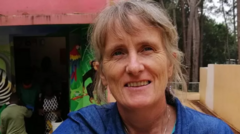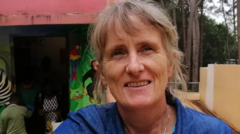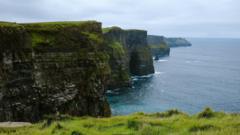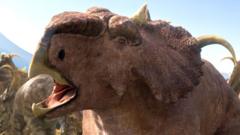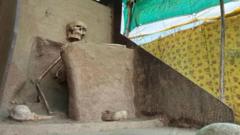In a poignant effort to uncover a hidden tragedy, excavators commenced work on Monday at the site of the former St. Mary’s Mother and Baby Home in Tuam, Ireland. This institution, run by the Catholic Bon Secours order from 1925 until its closure in 1961, housed unwed mothers and their children, with an estimated 800 infants having died due to neglect and poor conditions. Alarmingly, many of these children were buried within septic tanks, shrouding their fates in decades of secrecy and stigma.
Daniel MacSweeney, who heads the excavation project under the aegis of the Irish government’s Office of the Director of Authorized Intervention, expressed the urgency of the search. “Some families have been seeking answers for many years,” he noted, emphasizing the moral implications tied to this historical narrative. The excavation team is employing small mechanized diggers equipped with sophisticated technology to identify signs of remains, shifting to manual digging when bodies are detected due to the complexity of the situation.
Scientific estimates suggest that many of the infants' remains may be intermixed within a confined area, raising concerns about the ethical treatment of the deceased. The site has long been synonymous with controversy, reflecting the societal and institutional failures that once marginalized pregnant women and their children. While the excavation represents a step toward healing, it also serves as a stark reminder of the widespread neglect that marked this chapter of Irish history.
Daniel MacSweeney, who heads the excavation project under the aegis of the Irish government’s Office of the Director of Authorized Intervention, expressed the urgency of the search. “Some families have been seeking answers for many years,” he noted, emphasizing the moral implications tied to this historical narrative. The excavation team is employing small mechanized diggers equipped with sophisticated technology to identify signs of remains, shifting to manual digging when bodies are detected due to the complexity of the situation.
Scientific estimates suggest that many of the infants' remains may be intermixed within a confined area, raising concerns about the ethical treatment of the deceased. The site has long been synonymous with controversy, reflecting the societal and institutional failures that once marginalized pregnant women and their children. While the excavation represents a step toward healing, it also serves as a stark reminder of the widespread neglect that marked this chapter of Irish history.










